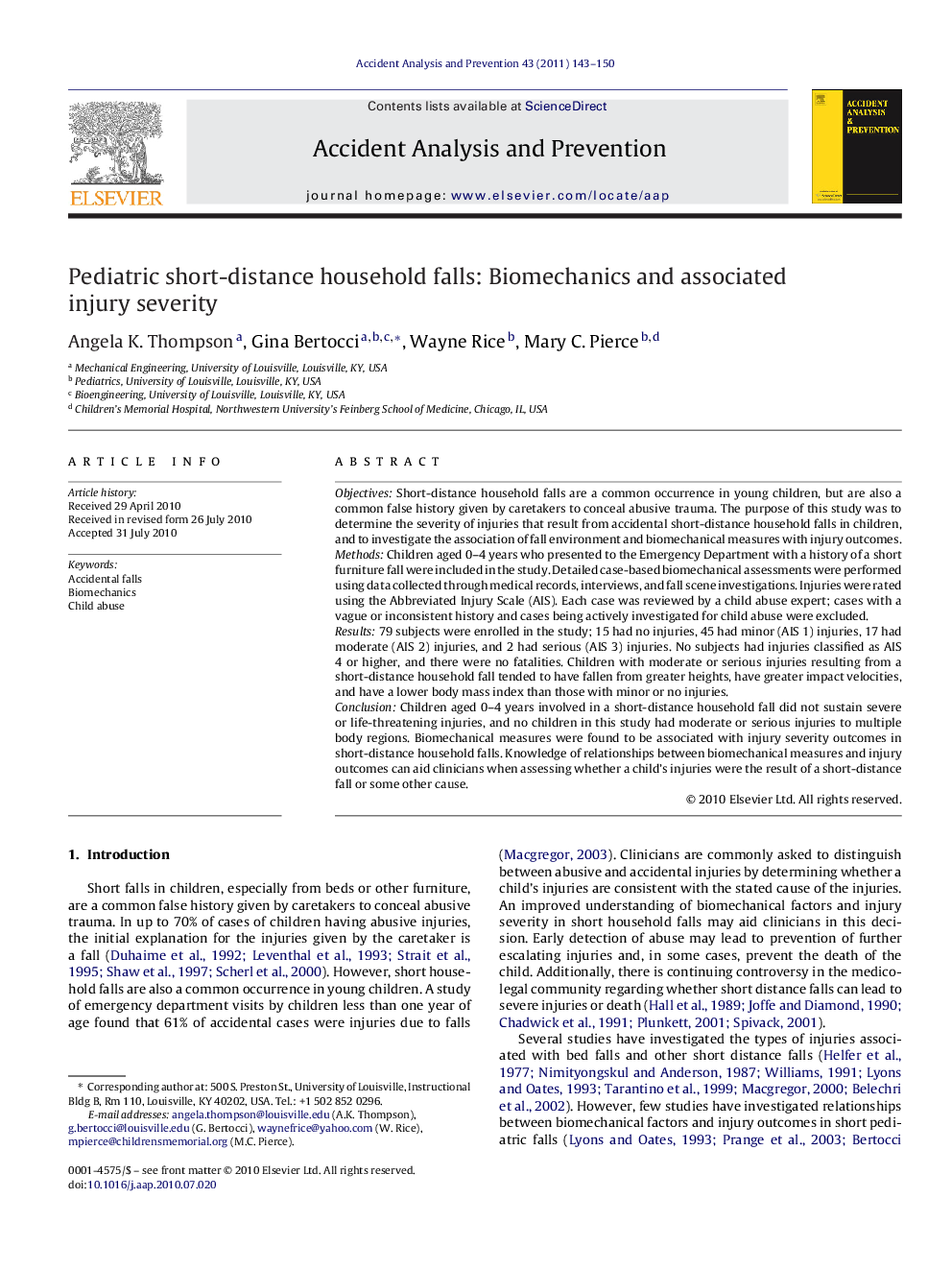| Article ID | Journal | Published Year | Pages | File Type |
|---|---|---|---|---|
| 572743 | Accident Analysis & Prevention | 2011 | 8 Pages |
ObjectivesShort-distance household falls are a common occurrence in young children, but are also a common false history given by caretakers to conceal abusive trauma. The purpose of this study was to determine the severity of injuries that result from accidental short-distance household falls in children, and to investigate the association of fall environment and biomechanical measures with injury outcomes.MethodsChildren aged 0–4 years who presented to the Emergency Department with a history of a short furniture fall were included in the study. Detailed case-based biomechanical assessments were performed using data collected through medical records, interviews, and fall scene investigations. Injuries were rated using the Abbreviated Injury Scale (AIS). Each case was reviewed by a child abuse expert; cases with a vague or inconsistent history and cases being actively investigated for child abuse were excluded.Results79 subjects were enrolled in the study; 15 had no injuries, 45 had minor (AIS 1) injuries, 17 had moderate (AIS 2) injuries, and 2 had serious (AIS 3) injuries. No subjects had injuries classified as AIS 4 or higher, and there were no fatalities. Children with moderate or serious injuries resulting from a short-distance household fall tended to have fallen from greater heights, have greater impact velocities, and have a lower body mass index than those with minor or no injuries.ConclusionChildren aged 0–4 years involved in a short-distance household fall did not sustain severe or life-threatening injuries, and no children in this study had moderate or serious injuries to multiple body regions. Biomechanical measures were found to be associated with injury severity outcomes in short-distance household falls. Knowledge of relationships between biomechanical measures and injury outcomes can aid clinicians when assessing whether a child's injuries were the result of a short-distance fall or some other cause.
Research highlights▶ Children aged 0–4 years involved in a short-distance household fall did not sustain severe or life-threatening injuries. ▶ No children had moderate or serious injuries to multiple body regions. ▶ Biomechanical measures, particularly fall height, impact velocity, and child body mass index, were found to be significantly associated with injury severity.
